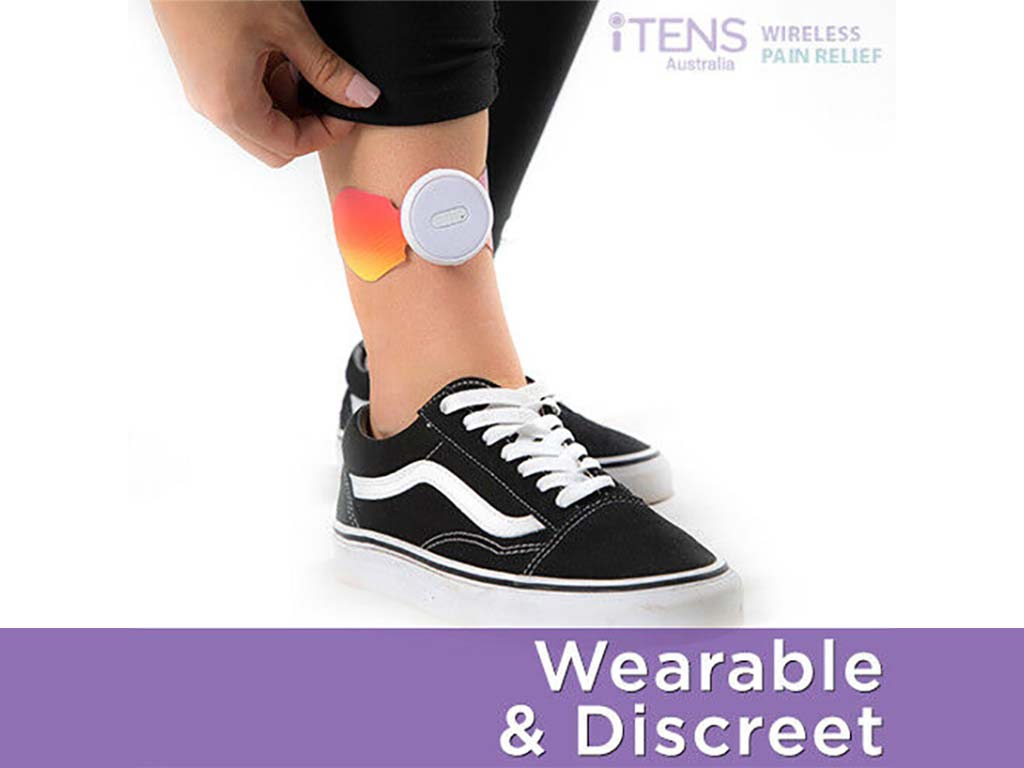
Transcutaneous Electrical Nerve Stimulation (TENS) is a therapy that uses a device to deliver electrical currents to the body. It can treat acute pain and chronic pain, including ankle discomfort. A TENS machine for ankle pain works in different mechanisms to provide pain therapy. However, knowing how to use the medical device is crucial. Begin by preparing the skin around the ankle. Then, apply the adhesive electrodes. Finally, turn on the device, adjust the settings, or choose a pre-set program.
Ankle pain can be debilitating, affecting daily activities and the overall quality of life. Finding long-term pain relief is crucial, whether it is due to damaged muscles, acute injury, or underlying conditions. Traditional treatment options may include physical activity, pain medications, and surgery. However, TENS therapy offers a safe and effective treatment for ankle discomfort. This article will present the TENS unit for ankle pain, including how it works and how to use it.
What is a TENS Machine for Ankle Pain?
Ankle pain refers to any discomfort or soreness in the ankle joint region. It is a complex structure composed of bones, muscles, ligaments, and tendons. Accordingly, this ailment can stem from various sources, such as personal injuries and tight muscles. Nevertheless, it can range from acute ankle pain to severe pain, causing limited mobility. Fortunately, TENS therapy can provide relief to the condition.
The TENS machine for ankle pain is an electrical stimulation device that sends electrical impulses to the nerve fibres to ease discomfort. It streams electric currents through electrode pads placed on the skin. Health professionals, including physiotherapists and sports medicine specialists, often recommend TENS treatment. Also, individuals suffering from ankle discomfort can use TENS units at home.
TENS devices are available in standard and wireless versions. Hence, it provides versatility and convenience to users. The standard unit typically comprises a central unit connected to the electrodes via machine wires. Meanwhile, the wireless TENS unit offers the same benefits but with greater freedom of motion. The device functions without the need for lead cables.
Causes of Ankle Pain
- Sprain: When the ligaments and tissues connecting bones tear, it often results in a sprained ankle. It typically happens when the foot twists or rolls.
- Fractures: Ankle fractures occur when one or more bones break. The injury can vary from a tiny crack to a complete break.
- Arthritis: Arthritis covers a range of joint diseases that lead to inflammation. Osteoarthritis and rheumatoid arthritis are frequent culprits.
- Tendonitis: Tendons, the cords that connect muscle to bone, can become inflamed.
- Gout: It is a specific type of arthritis that often affects the ankle.
- Neuropathy: Nerve damage can cause discomfort in the ankles. One common cause is diabetes.

How a TENS Machine for Ankle Pain Works
The TENS machine for ankle pain works in various mechanisms to provide analgesic effects. Foremost, the TENS unit sends electrical pulses to the treatment area. The stimulation boosts the production of endorphins. These are the natural painkillers of the body. Endorphins bind to pain receptors in the brain. Hence, this can reduce the perception of ankle discomfort and promote a sense of well-being.
Secondly, the electrical impulses can activate the pain gate mechanisms in the nervous system. This Gate Control Theory suggests that the nervous system can only process a certain amount of sensory information simultaneously. Thus, by stimulating the nerves with non-painful input, TENS essentially “closes the gate”. As a result, it prevents the transmission of pain signals to the brain.
When the TENS device is used, the electrical stimulation can also improve blood flow in the target area. Increased blood circulation carries oxygen and nutrients to the injured or painful tissue, facilitating healing. Moreover, improved flow helps to reduce swelling and inflammation. Overall, these mechanisms contribute to the safety and effectiveness of TENS therapy.
Frequencies and Intensities
TENS units operate through different frequencies and intensities. The frequency of TENS refers to how many electrical impulses are delivered per second and are measured in Hertz (Hz). Low-frequency settings (below 10 Hz) prompt the body to produce endorphins. Meanwhile, higher frequencies (above 50 Hz) are used to activate the pain gate mechanism.
On the other hand, intensity, measured in Milliamps (mA), determines the strength of the electrical pulses. The level of intensity needs to be set to a point where the user feels a strong but comfortable sensation. They may not experience discomfort or intense muscle contractions.

How to Use a TENS Machine for Ankle Pain
Using a TENS machine for ankle pain involves a series of steps. Before starting, one should consult a medical professional. This is to determine if TENS therapy is suitable for the condition. Once cleared, prepare the TENS unit. Then, prepare the skin in the ankle area. Position the adhesive electrode pads accordingly. Adhering to the proper electrode placement is crucial in this step.
Next, power on the TENS device. This may initiate users to adjust the settings. They can modify the frequency, intensity, or duration of the electrical stimulation. Additionally, some TENS units have pre-set programs. Thus, choose or select the one for ankle discomfort. Professionals recommend starting with the lowest settings and gradually increasing it to a comfortable level or optimal intensity level.
Subsequently, remain attentive to the sensations during the therapy. If there is any discomfort or muscle twitching, adjust the settings. Most sessions last between 15 to 30 minutes. Once the session concludes, power off the TENS device, remove the electrodes and clean the skin. Consistent use, as advised by a healthcare provider or manufacturer, often yields the best results.
Electrode Placement Guide
Begin by identifying the specific area of the ankle where the discomfort is most intense. Then, clean and dry the skin in the treatment area. This promotes better adhesion of the electrodes. Next, attach the electrodes firmly around the pain area. Ensure the pads are spaced evenly. For ankle discomfort, placing two pads on each side of the ankle or along the Achilles tendon is common.
Additionally, avoid placing the electrodes on open wounds, broken skin, or varicosities. Moreover, do not position the pads directly over bony areas where there is little muscle or fatty tissues.
Conclusion
In conclusion, sprains, fractures, arthritis, tendonitis, gout, and neuropathy are the common causes of ankle discomfort. Fortunately, using a TENS machine for ankle pain can manage and alleviate discomfort. It is a wired or wireless device that delivers electrical currents to the body. Accordingly, the electrical stimulation works by blocking pain signals, triggering the production of endorphins, and promoting blood flow. Additionally, TENS operates through different frequencies and intensities.
Furthermore, using the TENS unit is easy. Foremost, prepare the device. Then, identify the treatment region and clean the skin. Next, position the electrode pads. Finally, turn on the device, adjust the settings, or choose a pre-set program. However, following the electrode placement guide is crucial in the therapy. For ankle discomfort, position two electrodes on each side of the ankle or along the Achilles tendon. TENS machines are available in the market, including the online retailer iTENS Australia.







